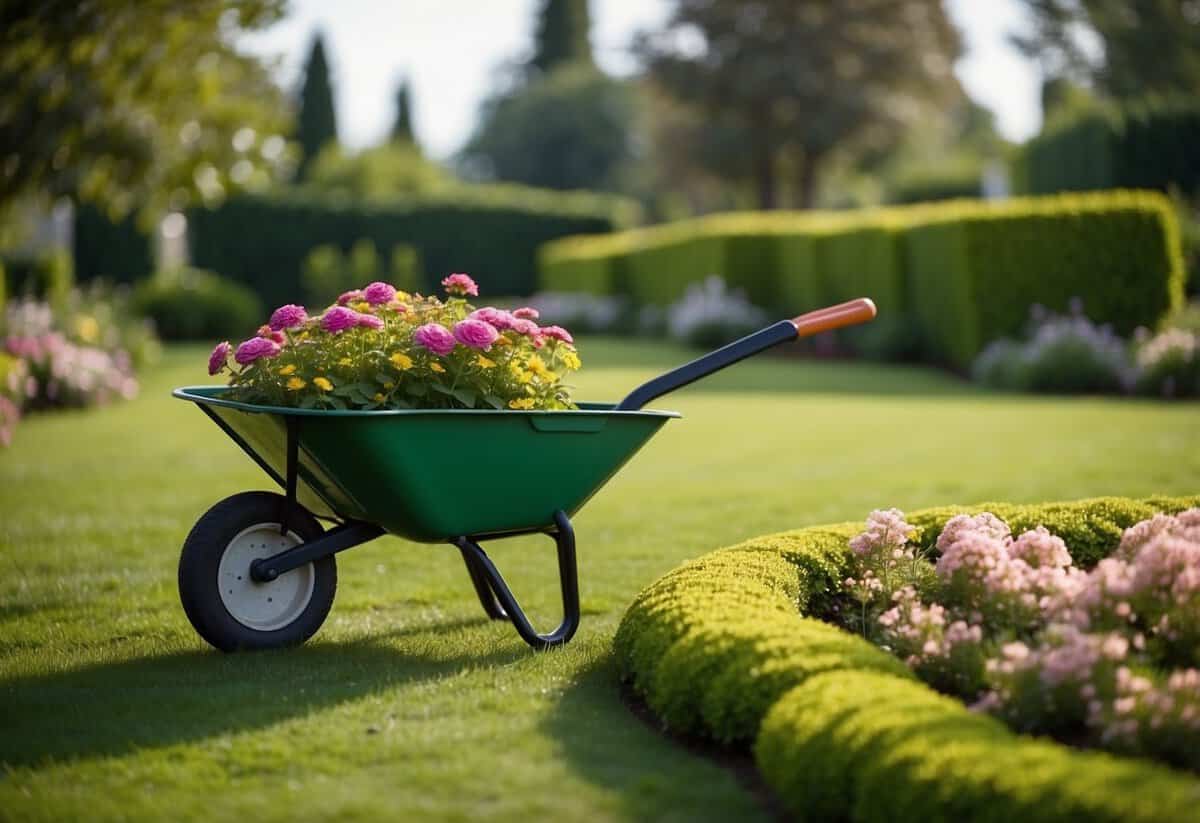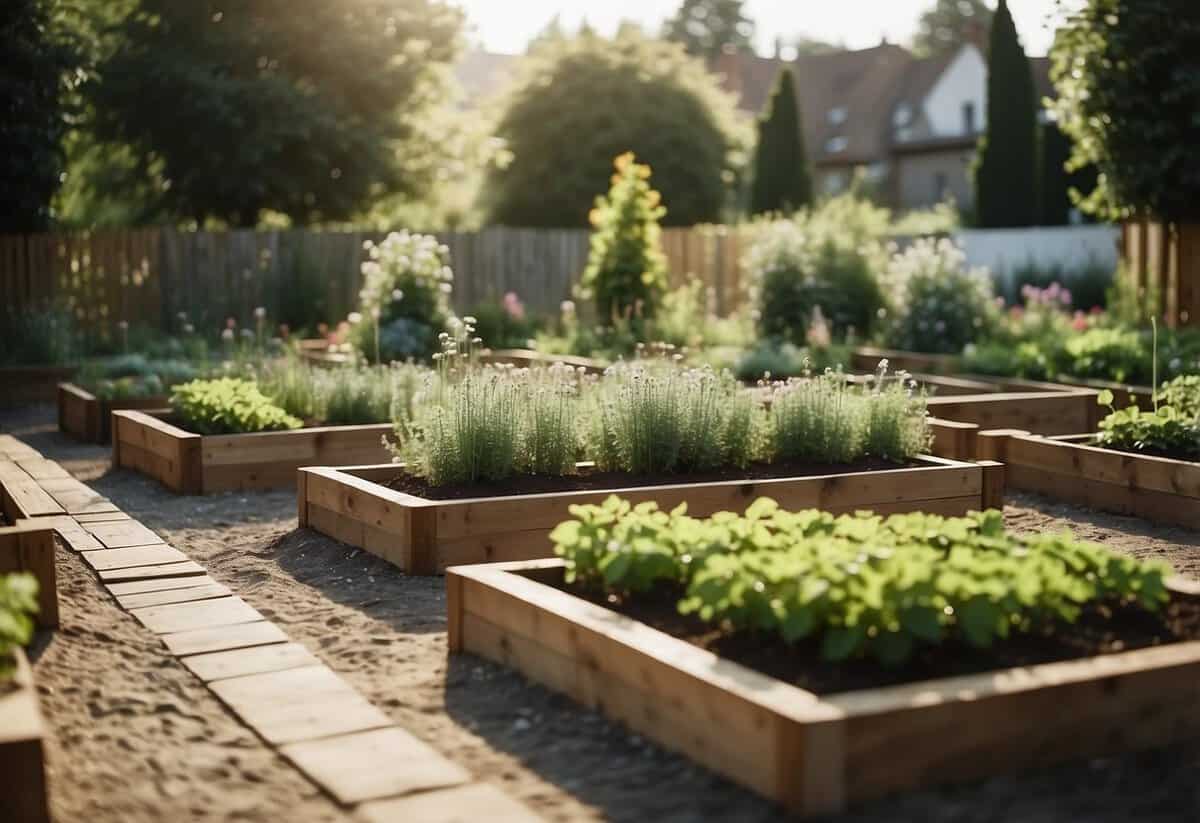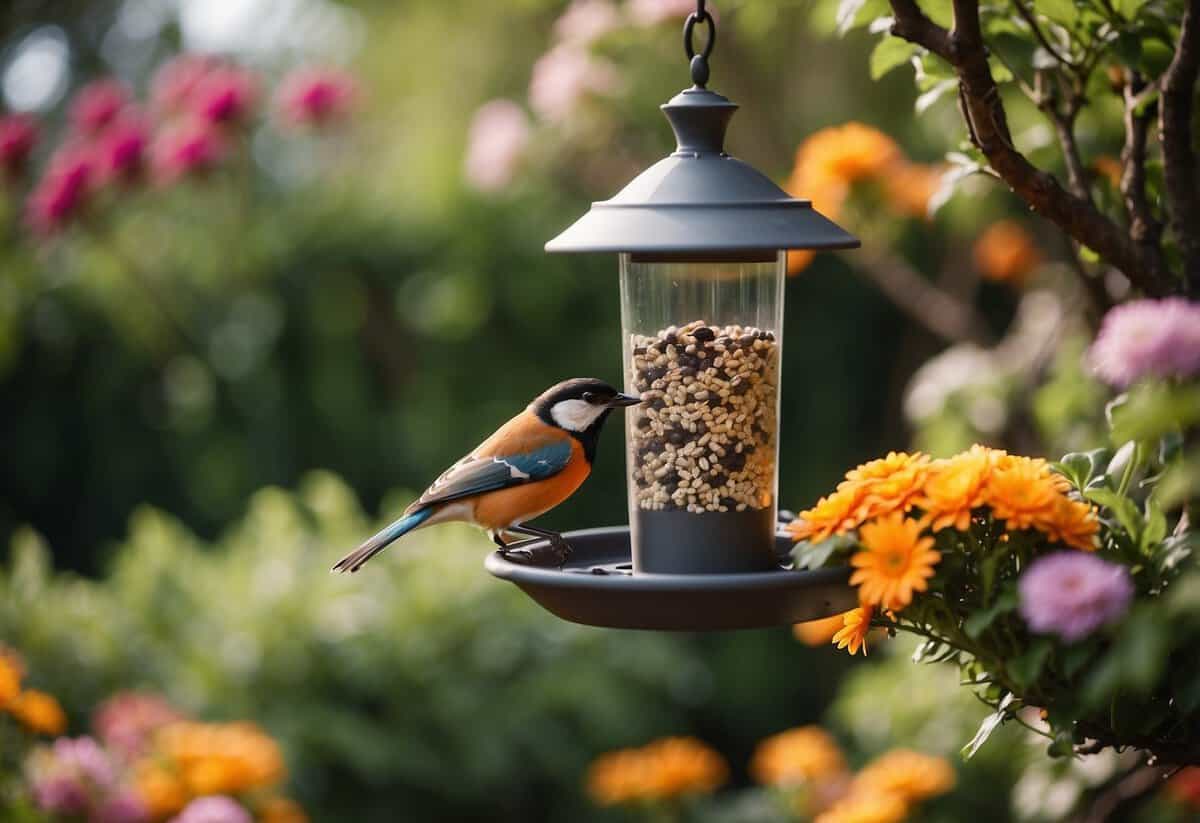Garden Tidy Up Tips: Easy Ways to Refresh Your Outdoor Space
Tidying up your garden can bring a sense of accomplishment and joy. Whether you’re a seasoned gardener or just starting out, keeping your garden neat and organized makes it a more enjoyable space to spend time in. Wondering how to make garden maintenance easier and more efficient?

A tidy garden not only looks great but also supports the health of your plants. By staying on top of tasks like weeding, pruning, and tool maintenance, you ensure that your plants have the best chance to thrive. Let’s explore some easy tips to help you maintain a beautiful garden space.
1) Trim Overgrown Hedges

Start by using loppers to remove one-third of the older stems. This allows sunlight to reach the inside of the hedge, promoting healthy growth.
Next, find any long stems that stick out and cut them close to the ground. This helps keep the hedge neat.
When you find a stem that splits into two, make your cut just above the Y-shaped split. This keeps new growth under control.
Maintain steady control of your trimmer by keeping your arms close to your body. Always use both hands on the hedge trimmer.
2) Weed Flower Beds Regularly

Regular weeding is key to keeping your flower beds looking their best. Removing weeds helps your plants thrive by reducing competition for water and nutrients.
Use mulch to keep weeds at bay. A layer of organic mulch blocks sunlight, making it harder for weed seeds to sprout (learn more).
Another helpful tool is a scuffle hoe. It allows you to weed without bending or kneeling, which can be a real time-saver (more details).
3) Add Mulch to Control Weeds

Mulch is a great way to keep weeds out of your garden. It helps block sunlight, which weeds need to grow. Plus, it adds nutrients to the soil.
To use mulch effectively, spread it about 2-3 inches deep. Make sure the mulch covers the whole garden bed.
You can also combine mulch with landscape fabric to stop weeds. This works especially well for bigger gardens.
4) Plant Perennials for Low Maintenance

Perennials can save you a lot of work in your garden. They come back every year, which means you don’t have to replant them each season. This saves you both time and money.
Some great options for low-maintenance perennials are Black-eyed Susans and peonies. These plants are easy to care for and add beauty to your garden.
Think about adding perennials to your garden to reduce upkeep and enjoy lasting beauty.
5) Use Compost for Healthier Soil

Adding compost to your garden soil is a great way to boost its health. Compost improves soil structure, making it easier for plant roots to grow.
It also helps retain moisture, reducing the need for frequent watering. By mixing compost into the top few inches of soil, you provide essential nutrients to your plants.
For your lawn, spread a thin layer of compost to revitalize the grass. This will nourish the grass and improve soil structure and moisture retention.
6) Install Drip Irrigation

Drip irrigation helps save water and keeps plants healthy. Start by planning your system layout. Place lines where plants need water.
Connect the mainline to your water source securely. Use a garden hose if needed. Punch holes in the mainline with an emitter tool. Insert drippers at these points.
Flush the system by letting water run for a few minutes. Close the ends with end cap fittings to prevent leaks.
With this setup, you ensure each plant gets the right amount of water, making your garden care easier.
7) Utilize Raised Garden Beds

Raised garden beds are a great way to keep your garden neat and organized. They can help you control the soil quality and drainage. Plus, they make it easier to reach your plants, which is perfect for anyone who wants to save their back while gardening.
Adding a layer of cardboard at the bottom of your raised beds can discourage weeds and attract beneficial worms. You can then fill them with logs, branches, and other organic matter before topping with soil. This method not only helps with drainage but also adds nutrients to the soil over time.
Selecting safe materials like untreated wood or metal for your raised beds is crucial. Avoid using pressure-treated wood made before 2003 as it may contain harmful chemicals. You can also space your plants closer together in raised beds since you don’t need walking space between rows. This can result in a more productive garden in a smaller area.
Consider the depth of your raised beds based on where you place them. If they’re on fertile ground, six inches might be enough. But if you’re setting them up on hard surfaces like concrete, aim for a depth of 12 to 14 inches. This ensures your plants have enough room to grow healthy roots.
8) Create a Garden Pathway

Creating a garden pathway adds charm and functionality to your space. Start by planning the route you want the path to take. It can be straight or curvy, depending on your garden’s layout.
Prepare the soil by digging down about four inches. Remove any rocks, roots, or debris. If your soil is clay-like, add some sand for better drainage.
Lay down a base layer of crushed gravel or stone dust. Then, add your chosen pathway material, such as flagstone, wood chips, or pavers. You can find more ideas for beautiful garden paths on The Spruce.
9) Add a Bird Feeder

Adding a bird feeder can make your garden more lively. Birds bring color and movement, creating a peaceful atmosphere.
You can choose from many DIY bird feeder ideas like a simple cardboard tube feeder. It’s perfect for getting kids involved.
Place the feeder in an area with plenty of sunlight and away from trees to keep it safe from squirrels. For a cleaner space, use a no-waste bird seed mix.
10) Use Natural Pest Control Methods

Using natural pest control methods keeps your garden healthy and safe. One good option is diatomaceous earth. Sprinkle it around your plants to control bugs like slugs and beetles. It dehydrates pests on contact.
You can also mix vegetable oil, mild soap, and water to make a simple insect spray. It works well against various bugs.
For another option, try baking soda. Sprinkling it around plants deters ants and roaches and is safe for your garden and pets.
Understanding Garden Tidy Up

Tidying up your garden improves its beauty and health. Knowing why it’s important and the basic principles can make the process easier and more effective.
Why Is It Important?
Tidying up your garden helps to keep plants healthy. When you remove dead leaves and weeds, you give your plants space to grow. This allows them to get more sunlight and nutrients. It can also stop the spread of pests and diseases.
A neat garden also boosts your mood and adds value to your home. Visitors and potential buyers will notice a well-maintained garden immediately. Plus, caring for your garden is a good way to spend time outside and get some exercise.
Basic Principles
Start by cleaning up debris and dead leaves. These can hide pests and diseases. Use good tools like secateurs for cutting branches and pruning plants efficiently.
Mark the edges of flower beds with stylish border edging. This can make your garden look neat and organized. Edging also helps keep grass from invading your flower beds.
Arrange outdoor furniture and accessories in separate zones. For example, have different areas for dining, lounging, and gardening. Using planters and outdoor rugs to define spaces can make your garden look more organized and inviting. This approach not only enhances the visual appeal but also creates functional areas for various activities, making your garden a more enjoyable space.
Seasonal Garden Maintenance

Throughout the year, your garden needs different kinds of care to stay healthy and beautiful. Each season brings unique tasks to ensure your garden thrives year-round.
Spring Cleanup
In the spring, start by clearing away winter debris. Rake up fallen leaves and sticks, and remove dead plants and branches. This helps new growth get the sunlight it needs.
Pruning is key. Trim back overgrown shrubs and trees to shape them and promote healthy growth. Pay attention to your lawn as well; reseed any bald patches and apply a slow-release fertilizer to support new grass growth.
Finally, check your soil. Spring is a great time to add compost or manure to enrich the soil. Test the soil pH and adjust it if necessary to create the optimal environment for your plants.
Summer Care
During summer, keep an eye on watering. Water in the early morning to reduce evaporation. Ensure that container plants are watered daily since they dry out faster. Mulch garden beds to retain moisture and suppress weed growth.
Regularly prune flowering plants to encourage continuous blooms. Harvest vegetables and fruits when ripe. For fruit-bearing shrubs, consider pruning after they have fruited. This helps prepare them for the next growing season.
Insects and diseases can become problematic. Vigilantly check your plants for signs of trouble and use organic pesticides when necessary. Fertilize flowers and vegetables monthly to keep them nourished.
Autumn Preparation
Fall is the time to prepare your garden for the cold months ahead. Start by cleaning up fallen leaves and debris. Use a mulching mower to chop leaves into small pieces that can be turned into leaf mold, enriching the soil.
It’s also time to prune back perennials and remove annuals that have finished their lifecycle. This tidies up the garden and reduces places for pests to hide over winter. Plant spring-blooming bulbs now so they can establish roots before the ground freezes.
Lastly, give your garden one last good watering before the first frost. This ensures that plants go into winter well hydrated, which is critical for their survival.
Winter Protection
Winter care involves protecting your garden from cold temperatures. Mulch your flower beds heavily to insulate plant roots from freezing. Cover delicate plants with burlap or garden blankets to shield them from harsh winds and frost.
Keep an eye on snowfall. Snow can actually provide insulation, but heavy snow can break branches. Gently shake snow off bushes and trees to prevent damage. For garden tools, clean and disinfect them before storing. This keeps them in good condition for the next growing season.
In areas with mild winters, you can continue to plant hardy vegetables like kale and carrots. They can withstand the cold and provide fresh produce even in winter.
Tools And Equipment

Having the right tools can make garden tidying much easier and more effective. Each tool serves a specific purpose and helps maintain different parts of your garden.
Essential Tools
For basic garden upkeep, you need to have a few essential tools. Hand trowels are versatile for planting and weeding. Pruners are crucial for trimming shrubs and small branches. Rakes help gather leaves and debris, while garden forks are great for turning soil.
Hoes and hand weeders make weeding fast and easy. Watering cans and hoses are needed to keep plants hydrated. A good pair of garden gloves will protect your hands as you work.
Specialized Equipment
Some tools are designed for more specific tasks. Electric or manual hedge trimmers keep your bushes and hedges tidy. The Hozelock Green Power Evolution Thermal Weeder delivers heat to kill weeds instantly.
Large areas may require a leaf blower or a mulcher to quickly clear debris. Garden kneelers provide comfort while working on your knees. For those with trees, a pole pruner helps you reach high branches safely.
Tool Maintenance
Keeping your tools in good condition ensures they last longer and work well. Start by cleaning them thoroughly. Soak tools in a bleach solution to kill any bacteria, then dry them completely.
Sharpen blades on pruners and shears regularly to keep them effective. Store tools in a dry place to prevent rust. Building a tool rack keeps them organized and easily accessible. These steps will keep your tools ready for any gardening task.







